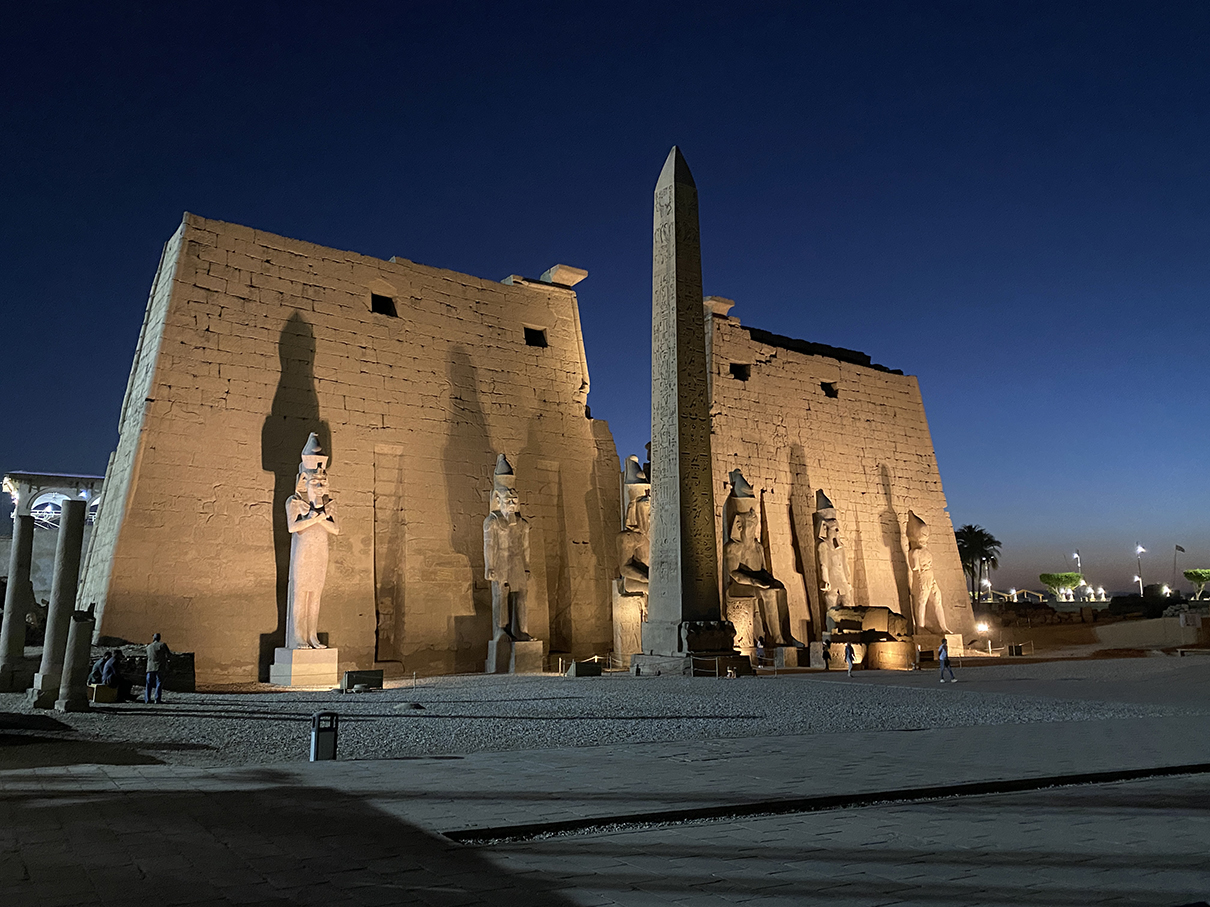Difference between revisions of "Template:POTD protected"
Occultwiki (talk | contribs) |
Occultwiki (talk | contribs) |
||
| Line 1: | Line 1: | ||
{| role="presentation" style="margin:0 3px 3px; width:100%; text-align:left; background-color:transparent; border-collapse: collapse; " | {| role="presentation" style="margin:0 3px 3px; width:100%; text-align:left; background-color:transparent; border-collapse: collapse; " | ||
|style="padding:0 0.9em 0 0;" | [[File: | |style="padding:0 0.9em 0 0;" | [[File:Luxor Night.jpg|300px|thumb|]] | ||
|style="padding:0 6px 0 0"| | |style="padding:0 6px 0 0"| | ||
'''[[ | '''[[Luxor]]''' is a city in Upper (southern) Egypt and the capital of Luxor Governorate. It is among the oldest inhabited cities in the world. Luxor has frequently been characterized as the "world's greatest open-air museum," as the ruins of the Egyptian temple complexes at Karnak and Luxor stand within the modern city. | ||
The city was regarded in the ancient Egyptian texts as ''wAs.t'', which meant "city of the sceptre," and later in Demotic Egyptian as ''ta jpt'', which the ancient Greeks adapted as Thebai and the Romans after them as Thebae. Thebes was also known as "the city of the 100 gates," sometimes being called "southern Heliopolis" to distinguish it from the city of Iunu or Heliopolis, the main place of worship for the god [[Ra]] in the north. | |||
<p><small> | <p><small>Photographer: [[Travis McHenry]]</small></p> | ||
[[:Category:Images|'''(More Images)''']] | [[:Category:Images|'''(More Images)''']] | ||
<div class="potd-recent" style="text-align:right;"> | <div class="potd-recent" style="text-align:right;"> | ||
Revision as of 15:48, 19 October 2023
|
Luxor is a city in Upper (southern) Egypt and the capital of Luxor Governorate. It is among the oldest inhabited cities in the world. Luxor has frequently been characterized as the "world's greatest open-air museum," as the ruins of the Egyptian temple complexes at Karnak and Luxor stand within the modern city. The city was regarded in the ancient Egyptian texts as wAs.t, which meant "city of the sceptre," and later in Demotic Egyptian as ta jpt, which the ancient Greeks adapted as Thebai and the Romans after them as Thebae. Thebes was also known as "the city of the 100 gates," sometimes being called "southern Heliopolis" to distinguish it from the city of Iunu or Heliopolis, the main place of worship for the god Ra in the north. Photographer: Travis McHenry |
